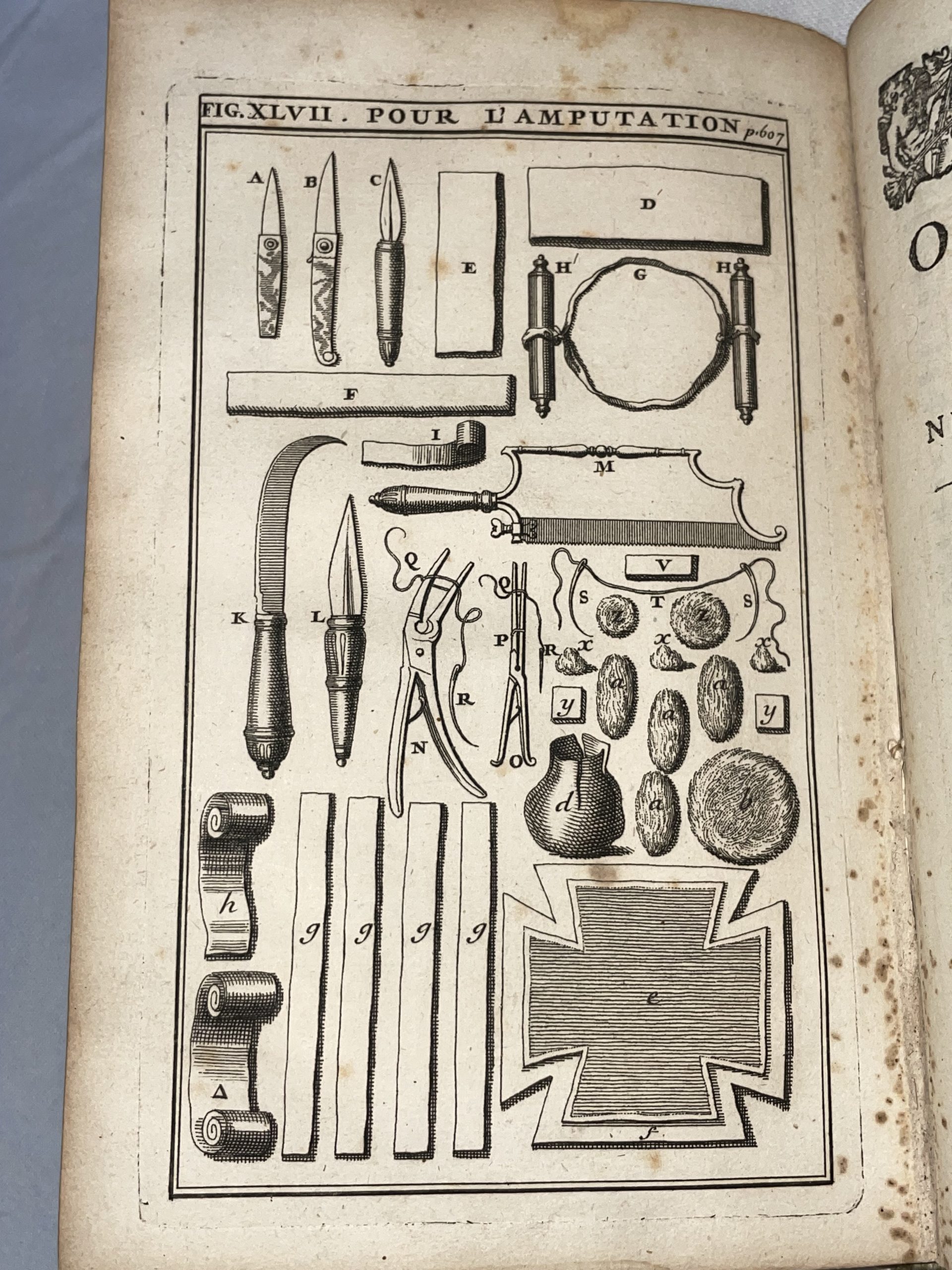While cleaning out and reorganizing the R.D. Musser Library, we came across a very old book neatly tucked away in an archival box.
The book is 8 inches long, 5 inches wide, and 2 inches thick covered in a dark red leather which has worn over time. The front cover has no title, but the spine reads “COVRSE D’OPERAT” and the title page shows an extended title, which loosely translates to “Course of Surgical Operations Demonstrated in the Royal Garden” by M. Dionis. This intriguing book is written entirely in French and bears a copyright date of 1707.



On the first flyleaf of the book we see three names handwritten in different colored ink: B.B. Appleton, Dr. E.E. Braun, and Charles Guernon. Using our family records and extensive collection of the Little Falls Daily Transcript, we were able to piece together who two of these folks were and how they are connected to Morrison County.

Dr. Eugene Edmond (E.E.) Braun was born on June 11, 1821 in Quebec, Canada. He married Marie Ann Sophie Herminia Arnould, also from Canada, on February 16, 1847. The pair settled in Charlestown, Massachusetts where Dr. E.E. Braun practiced medicine for twelve years. Next came a move to Minnesota, where they first lived in St. Paul briefly before finally arriving in Little Falls in 1868. According to the Little Falls Daily Transcript from August 2nd, 1907, Dr. Braun “was a post surgeon at Fort Ripley during the Indian troubles and prior to that time was a surgeon in the Civil War.” No wonder this experienced surgeon held on to this book—even if it was already nearly 150 years old by the time he practiced.
Mr. and Mrs. Braun had five children: Maria Sophia (Sophie), Josephine, Mary Louise, Eugenia Ermalinda, and Cecelia Rachel. Oldest daughter Sophie (1849-1901) went on to marry Dr. Jean Adelord Guernon (1844-1889) in 1872 in Little Falls, where they lived thereafter. On December 4, 1874 Sophie and Adelord welcomed there first son together, Charles Louis Augustus Guernon—the second name we see written in the French surgical book.
Charles Guernon lived in Little Falls for almost his entire life, until he passed away due to illness on April 7, 1932. After marrying his wife Sarah Elizabeth Rothwell on June 25, 1902, Charles operated a bicycle shop in town, listed in the 1907-1908 city directory as the Little Falls Plumbing and Cycle Company, located at 100 4th St NE, which is now an empty lot. Charles and Sarah Elizabeth had three children: Edmund Charles, William Alexander, and Sophie Elizabeth. William Alexander, who was therefore Dr. and Mrs. E.E. Braun’s great-grandson, was the one to donate the 1707 French book to the Morrison County Historical Society in August of 1977. Interestingly, we have two more books that belonged in Dr. E.E. Braun’s library: Volume I and II of “The Works of Shakespeare” from 1853, also donated by William Guernon later in 1990.
There is a great level of satisfaction when four generations’ worth of connections can be made related to an artifact, as it creates a gateway to the story behind the artifact and therefore the story of the people who owned it. It is not known who B.B. Appleton was or where he or she was from. If only we could trace the story back one step further and learn the life of the original owner of this book that originated in Paris, France and ended up in Little Falls, Minnesota. Who were they? Perhaps a practicing surgeon? A student? What do you think?

An interesting attribute to the text within this book, along with many other publications dating back to around this era, is the use of the “long s” otherwise known as the “medial s.” If you peek at the photos showing example pages of text from within the book, you’ll see a funny looking letter that looks like an “f” without a crossbar, used in place of a short “s” at the beginning or in the middle of some words. There are different uses for the “long s” in different languages. The use of the “long s” originates back to old Roman cursive, then it died out for a while, came back into use in Italy between 1465 and 1480, and largely fell out of use due to the printing press… after all, why would you have two separate stamps for “s” when using only the short “s” in all circumstances still ensures text is perfectly readable? The “long s” was still seen in academic and official texts thereafter, but it was out of use in French by the 1780s and American English by about 1820.



By: Sylvia M. Sandstrom
Sources: Little Falls Daily Transcript 1907-1932, Morrison County Historical Society Family Files, https://www.historyofinformation.com/detail.php?id=2344


What an interesting story! Thank you.
It shows why some artifacts, while not from an area, are important to an area. But, it takes research and someone to write down the result of that research. Volunteers, ARISE!
What great detective work! I can’t wait to read more about the hands this book went through before you brought it back to light during the cleaning and reorganizing of the R. D. Musser library at the museum.